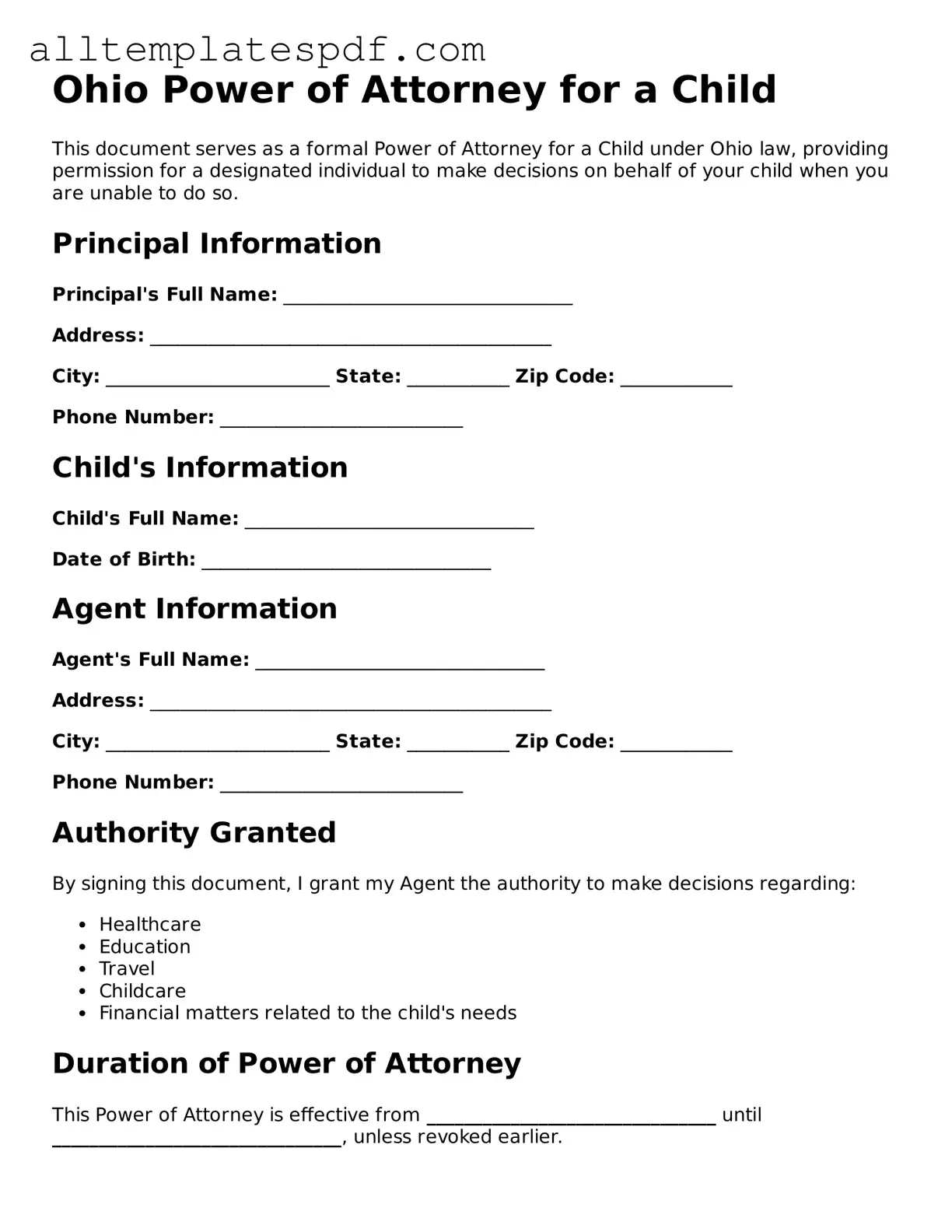Blank Power of Attorney for a Child Template for the State of Ohio
The Ohio Power of Attorney for a Child form is a legal document that allows a parent or guardian to grant temporary authority to another individual to make decisions on behalf of their child. This form is particularly useful in situations where the parent is unable to care for the child due to travel, illness, or other circumstances. To ensure your child's well-being and secure necessary care, consider filling out the form by clicking the button below.
Open Editor
